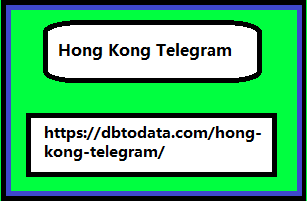Post by account_disabled on Mar 4, 2024 23:59:38 GMT -6
Before starting, I'll make a small introduction. There are many articles on the Internet that talk about "inbound marketing strategy" , but you will hardly find posts that talk about "inbound" and "marketing strategy" seen as two separate and complementary entities. In this post, I will talk to you about how Inbound can be used and included in a broader marketing strategy. What I want to say is that for us Inbound is only a part, albeit important, of a broader marketing strategy, but it is not the strategy itself : the history of OFG Advertising, as a good integrated communication agency, leads us to have a broad-spectrum vision of marketing and communication that is not only linked to inbound techniques.
Ready? Ok, let's get started! We have seen Hong Kong Telegram Number Data what inbound marketing is , how it works and what its potential is: we know that it can be applied in full force to a company whose conversions have a rather high average value , but we have also seen how it is possible use it to increase the brand's authority through content management aimed at generating interest in our buyer personas. We now want to focus on the strategic part of communicating and how to include inbound marketing in a broader marketing strategy. We have learned by now, before talking about strategy we must start from the analysis of our marketing objectives and transform them into communication objectives : in this way we give ourselves a direction and chart our route in the world of communication .

On this point there are many metaphors, I read one somewhere that described communicating without strategy like playing darts with a blindfold : hitting the target without knowing where it is is rather complicated. Strengths and weaknesses of inbound marketing. Since we are talking about strategy, before reviewing its weaknesses & strengths , I would like to bring to your attention a topic that has been running through my head ever since I came across inbound marketing on my path: it is the inbound methodology itself that is both its strength and its weakness. Let me explain better: if on the one hand Inbound is in a certain sense reassuring (both for the agency and for the company), because, in a very "American" way, it is super organized and makes it difficult to miss pieces for street; on the other hand, however, it must be able to adapt because the real world of communication and marketing is undoubtedly more entropic.
Ready? Ok, let's get started! We have seen Hong Kong Telegram Number Data what inbound marketing is , how it works and what its potential is: we know that it can be applied in full force to a company whose conversions have a rather high average value , but we have also seen how it is possible use it to increase the brand's authority through content management aimed at generating interest in our buyer personas. We now want to focus on the strategic part of communicating and how to include inbound marketing in a broader marketing strategy. We have learned by now, before talking about strategy we must start from the analysis of our marketing objectives and transform them into communication objectives : in this way we give ourselves a direction and chart our route in the world of communication .

On this point there are many metaphors, I read one somewhere that described communicating without strategy like playing darts with a blindfold : hitting the target without knowing where it is is rather complicated. Strengths and weaknesses of inbound marketing. Since we are talking about strategy, before reviewing its weaknesses & strengths , I would like to bring to your attention a topic that has been running through my head ever since I came across inbound marketing on my path: it is the inbound methodology itself that is both its strength and its weakness. Let me explain better: if on the one hand Inbound is in a certain sense reassuring (both for the agency and for the company), because, in a very "American" way, it is super organized and makes it difficult to miss pieces for street; on the other hand, however, it must be able to adapt because the real world of communication and marketing is undoubtedly more entropic.
